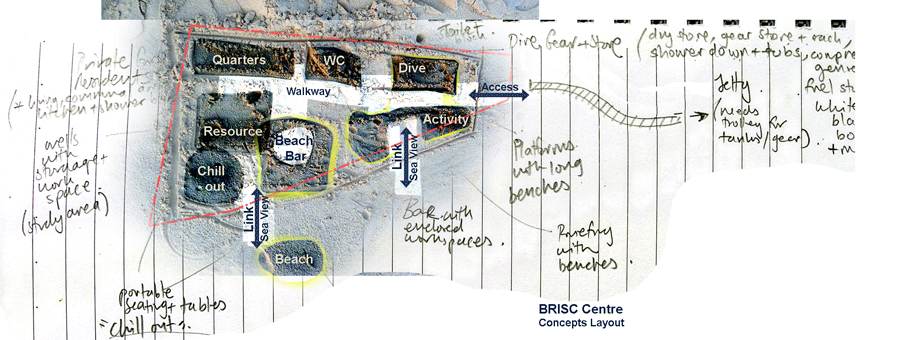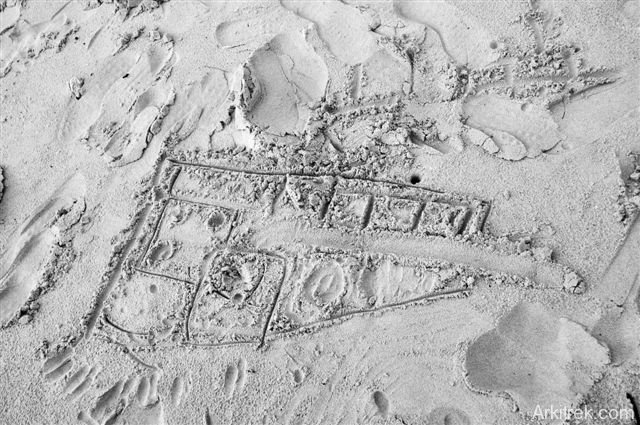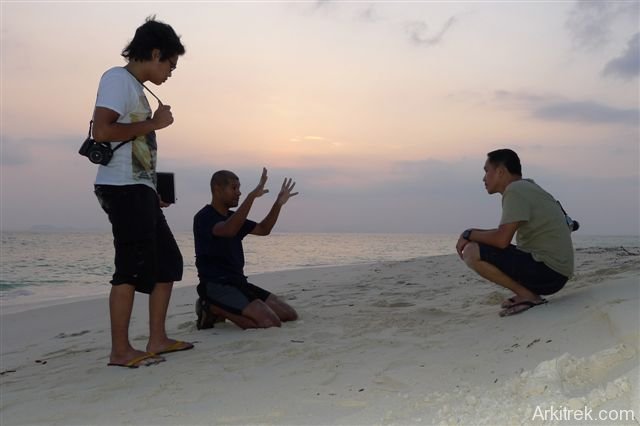Batu Batu Reef & Islands Study Centre
Text: by Ian Hall
Photos: by Ian Hall and Fauzan Aris
Pulah Babi Tengah (Middle Pig Island!) off the coast of Johor, Malaysia used to be a refugee camp run by UNHCR back in the 70’s. I’m not sure how idyllic a refugee camp could be but former interns, mostly Vietnamese, now Australian, seem to have fond recollections of the place. Stepping out of the glare of the sun and into the cool shade of the casaurina grove, you don’t have to look far to find relics of the refugee camp. The design team for the Batu Batu Reef and Island Study Centre (BRISC) pause to spread out their kit atop a concrete well, one of a network of wells which supplied water to the island’s former transient residents.
 The BRISC big idea is to link beach tourism with marine conservation, in this case facilitated by a partnership between Batu Batu Resort and Wild Asia. This partnership will inspire others to adopt principles of responsible tourism. After all, the tourism product in this case is crystal clear sea, clean beaches and abundant marine life. It makes good sense to protect this resource.
The BRISC big idea is to link beach tourism with marine conservation, in this case facilitated by a partnership between Batu Batu Resort and Wild Asia. This partnership will inspire others to adopt principles of responsible tourism. After all, the tourism product in this case is crystal clear sea, clean beaches and abundant marine life. It makes good sense to protect this resource.
Swatting troublesome mosquitoes and sand flies we debate where the living, working, chilling and dive centre functions of the BRISC should go. Someone told me once that casaurinas are colonial trees, as in, they grow in colonies. Their encircling trunks enclose a soft floor of needles, a shady and natural gathering place. Two such groves form the starting point for our site layout design concepts.
There will be a beach bar, naturally, on the beach. It will close shortly after sunset and the lights turned down to give those turtles a chance to navigate without distraction. There’s a gap between the casaurina groves which is an obvious place to connect the beach bar with the living and working areas under the trees.
Our intern Fauzan Aris, an architecture graduate from University of Malaya, is measuring the depth of a UNHCR well with a tape measure. Dr Reza Azmi, founder of Wild Asia is dangling a water sampler into the same well to test it’s salinity amongst other things. I’m looking at an Asian Brown Flycatcher through my binoculars.
There is a cluster of three wells on our site and the BRISC living and working areas will be built around them. The thick screen of vegetation at the beach edge will be retained. Those thick waxy leaves of Barringtonia and Terminalia trees are adept at retaining water in this harsh environment. They’re also pretty handy at providing shade and screening.
Other areas of the site are characterised by clumps of hibiscus and the leaning knobbly trunks of a leguminous tree species. It is in the legumes that I am watching the flycatcher and from their canopy comes the constant cheep-cheep of sun birds and flowerpeckers. Using illustrations in sketchbooks perched on the well covers we discuss how to retain this ecosystem.
Some trees will have to go of course but we can move the buildings around to protect and integrate larger trees and clumps of trees. We can also translocate the forest floor by about 6m vertically to the green roofs of the BRISC living, working and dive centre areas. Even the beach bar, poking out over the sand, can have a green roof. They’re very tenacious those casaurina and terminalia saplings. Can grow anywhere, although on the beach bar roof they may need to be kept trimmed so as not to overgrow the photo-voltaic panels.
Slap, slap, splat….scratch, scratch. Sand flies win and we adjourn to the beach now that the sun is going down. Our minds are buzzing and architect Leong Seng Kheong engages Reza in a furious sand etcha-sketch one-on-one battle. A sweep of the hand erases the previous sketch and simultaneously prepares a clean canvas for the next. Fingers etch out blobs and squares and lines and voila! A site layout design concept.
When BRISC is up and running the day to day activities will include monitoring changes in natural resources, including biodiversity. This data will provide evidence for how well the tourism operation is safeguarding the environment and allow it to adjust appropriately. The presence of naturalists and environmental science type fellas on the island will add value to the tourists’ experience and understanding of their impacts on the environment.
The presence of the dive centre will allow these studies to focus on the marine environment, although hopefully there will still be space for those who prefer binoculars to snorkel masks.
Related posts
%RELATEDPOSTS%





